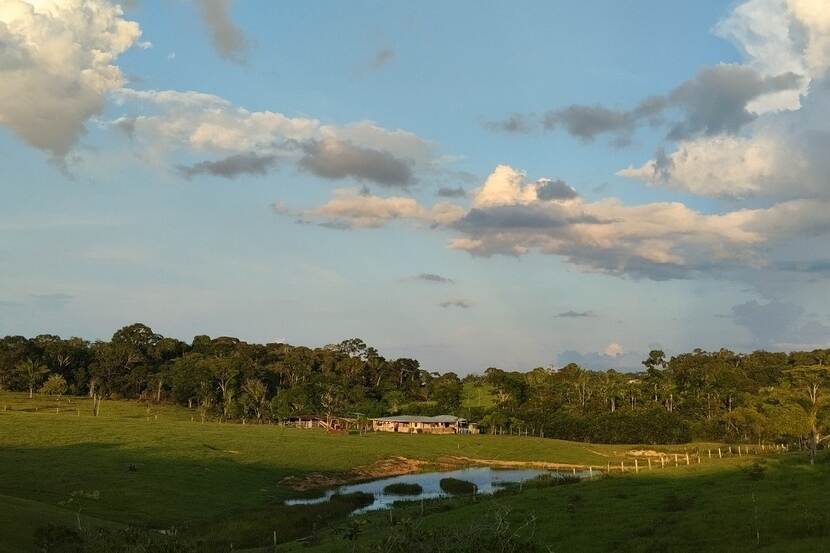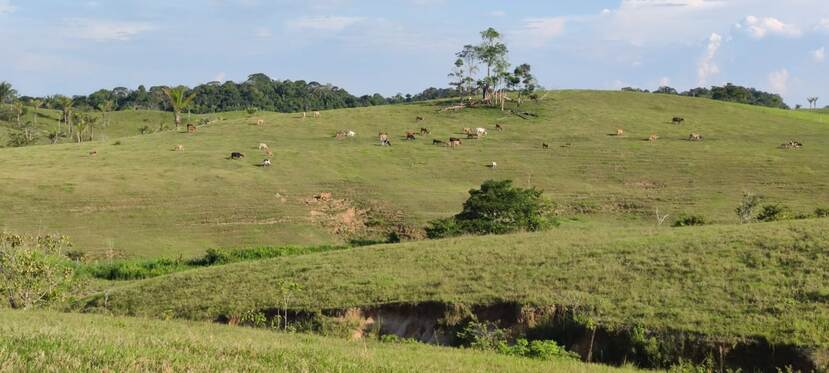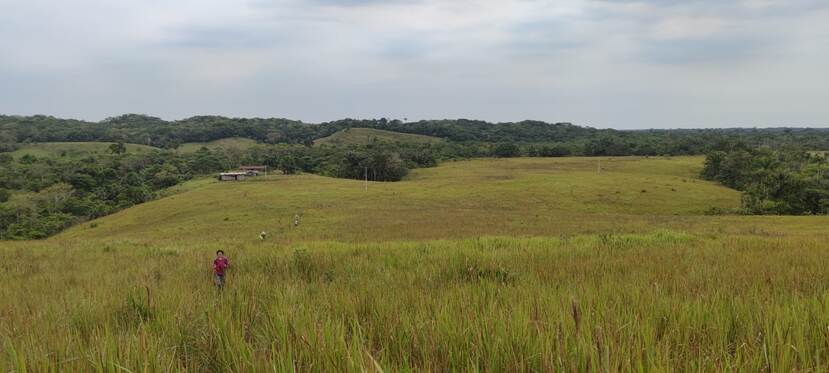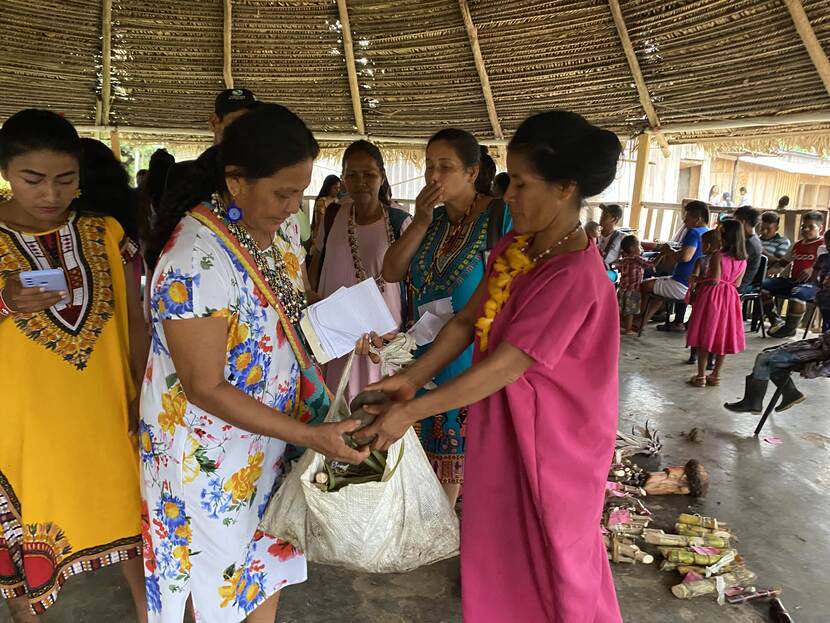Inhabitants of the Amazon rainforest are joining hands to combat climate change and deforestation
Weblogs
Forests keep our planet healthy. They absorb carbon dioxide, offer natural protection against heat and are home to millions of animal and plant species. Yet forests increasingly have to make way for human activities, with huge consequences for nature and local populations. On World Environment Day, Clara van der Hammen of Tropenbos International in Colombia explains how the local population there is working to restore the forests.

Biodiversity at stake
For decades, vast areas of the Amazon rainforest - the biggest rainforest on earth -have been felled in order to make room for human activities. Trees are being cut down to grow crops or raise livestock. Since the 1970s an estimated 20% of the rainforest has been felled.
This has a huge impact on the habitat of millions of plant and animal species, and on the lives of the indigenous inhabitants of the Amazon. Deforestation is also making the rainforest hotter and drier, and thus more vulnerable to climate change.
Deforestation
The Netherlands wants worldwide deforestation to stop. Together with other countries, we are sharing the responsibility of protecting our planet. That’s why the Ministry of Foreign Affairs is committed to protecting tropical rainforest and other forested regions. For example, through EU rules to guarantee that the products EU citizens consume do not contribute to deforestation or forest degradation worldwide. As a result, it is forbidden to buy such products in the EU.
In addition, the Netherlands supports local projects that combat deforestation and are aimed at restoration or sustainable agriculture, like the Working Landscapes programme set up by Tropenbos International (TBI) in Colombia. This country has around 634,000 km² of the Amazon rainforest: over 7% of the total area. ‘TBI’s top priority is to improve the relationship between humans and the rainforest,’ explains Maria Clara van der Hammen, who works for TBI in Colombia. ‘TBI promotes the conservation and restoration of forests, and encourages people to use forests wisely.’
‘Through the Working Landscapes programme,’ she continues, ‘we foster climate-friendly use of land in heavily forested areas. That involves promoting wise use of farmland and forest by involving the local population in decisions on land use, as well as providing a financial incentive.’
A look at the deforested rainforest in Solano:



Solano
In Colombia, TBI is mainly active in Solano, a heavily forested area in the south of the country where much of the indigenous population lives. There is special focus on Solano because it has one of the highest deforestation rates in Colombia, Clara says. ‘In the past, the main reason for deforestation here was to clear land for coca cultivation. But nowadays, livestock farming is swallowing up the valuable forest bit by bit.’ That causes two problems, she explains. ‘It reduces biodiversity, food sources and even the water supply – trends that are made worse by climate change. And on top of that, the habitat of the indigenous population is getting smaller and smaller.’
Indigenous population
Both the indigenous population and local farmers have an important role to play in the restoration of tropical forests, Clara says. ‘First of all, we need to bring the two parties together. They both live there, and you can’t just tell one group or the other that they have to leave. But in the past, farmers and indigenous communities hardly ever interacted. We worked to bring them together, because it was vital they actually got to know each other.’
‘It’s worked out pretty well,’ Clara goes on. ‘People have come to appreciate the value of forests. They see how long it takes for a forest to recover after felling, including the diverse ecosystem of plants and animals.’

Participating in decision-making
This approach results in good initiatives, she tells me. ‘Farmers and members of local indigenous communities are making joint plans to restore parts of the forest, which they then submit to us. For example, there’s a small river that flows through a lot of farmland before it reaches one of the indigenous reservations. The peoples of the reservation and the farmers have decided to work together to improve the quality of the water. It’s a nice example of “participatory productive restoration”, an approach that we promote. It means that local communities are themselves given a say in the future of their habitat.’
Projects like this are the raison d’être of Tropenbos International, Clara says enthusiastically. ‘Our aim is to restore forests in order to make wise use possible again in the future. People can obtain a loan for restoring deforested areas, because we believe that will ultimately bring about economic growth. That’s the thinking behind projects involving the establishment of communal plant nurseries. On these plots of land, all kinds of plants and trees are grown, sometimes up to 90 different species, which in the end will become a forest. An additional benefit is that those nurseries create employment, especially for women.’
Working Landscapes
Combating deforestation is a priority for the Ministry of Foreign Affairs. It has earmarked 11 million euros for the Working Landscapes programme, which runs until 2025. Support of this kind makes all the difference for organisations like TBI, Clara says. ‘We have a close relationship with the Ministry, including through the Dutch embassy in Bogotá. Thanks to Working Landscapes, we’ve been able to achieve concrete results: some 300 hectares of forest have been restored through all kinds of activities. That may not sound like a lot, but we’re not doing this alone. Other organisations are also working to restore deforested areas. So promoting collaboration between local actors really helps! And luckily the Colombian government is also closely involved.’